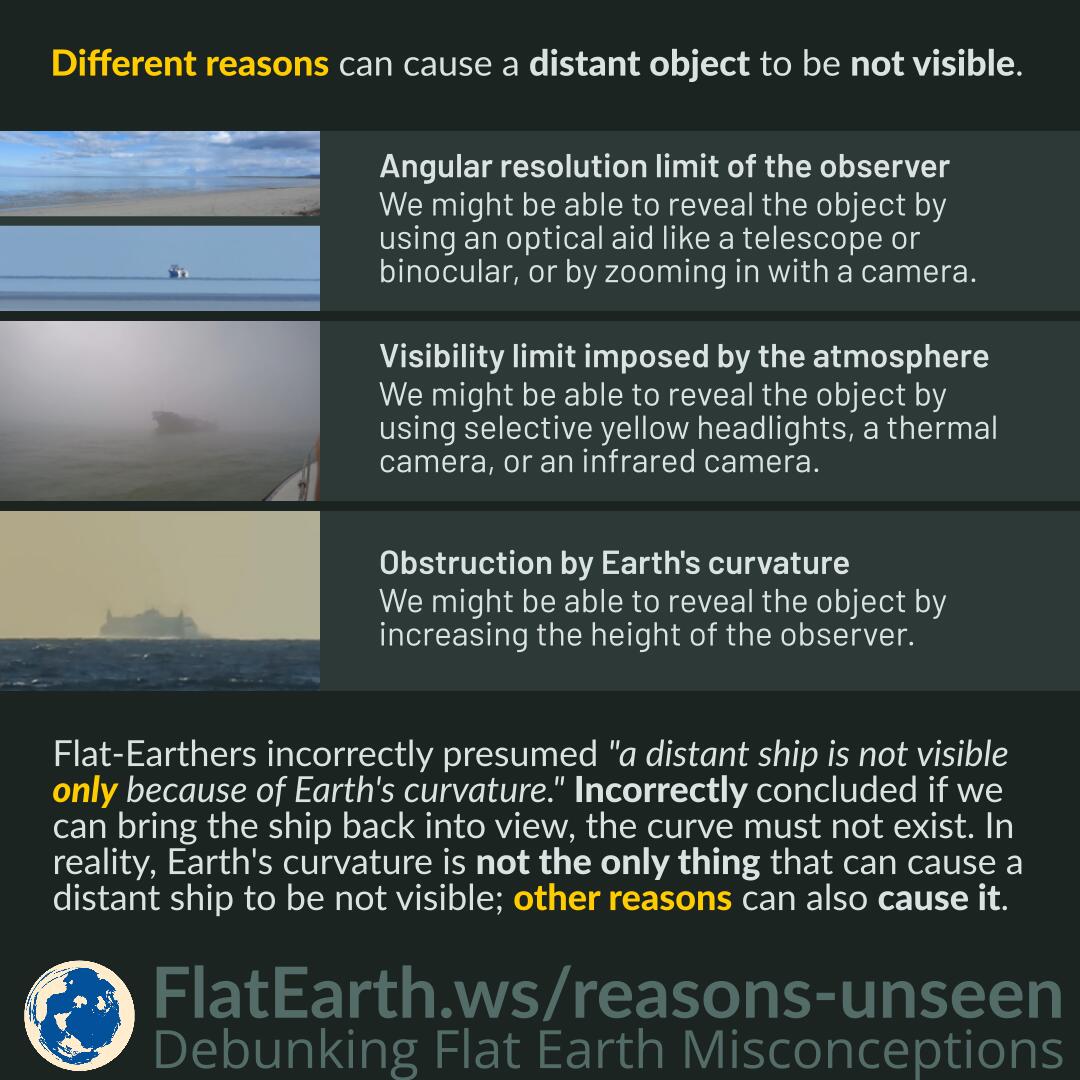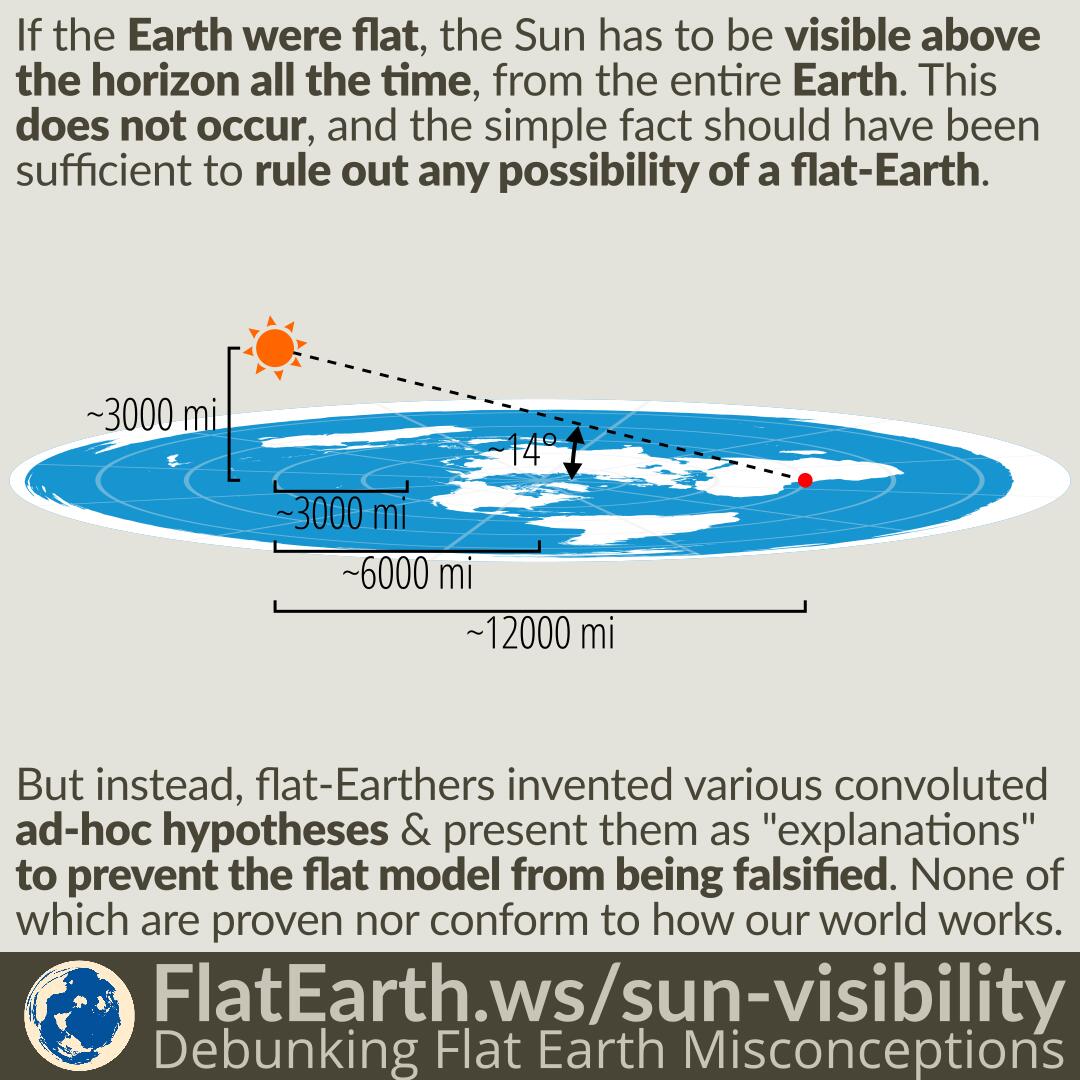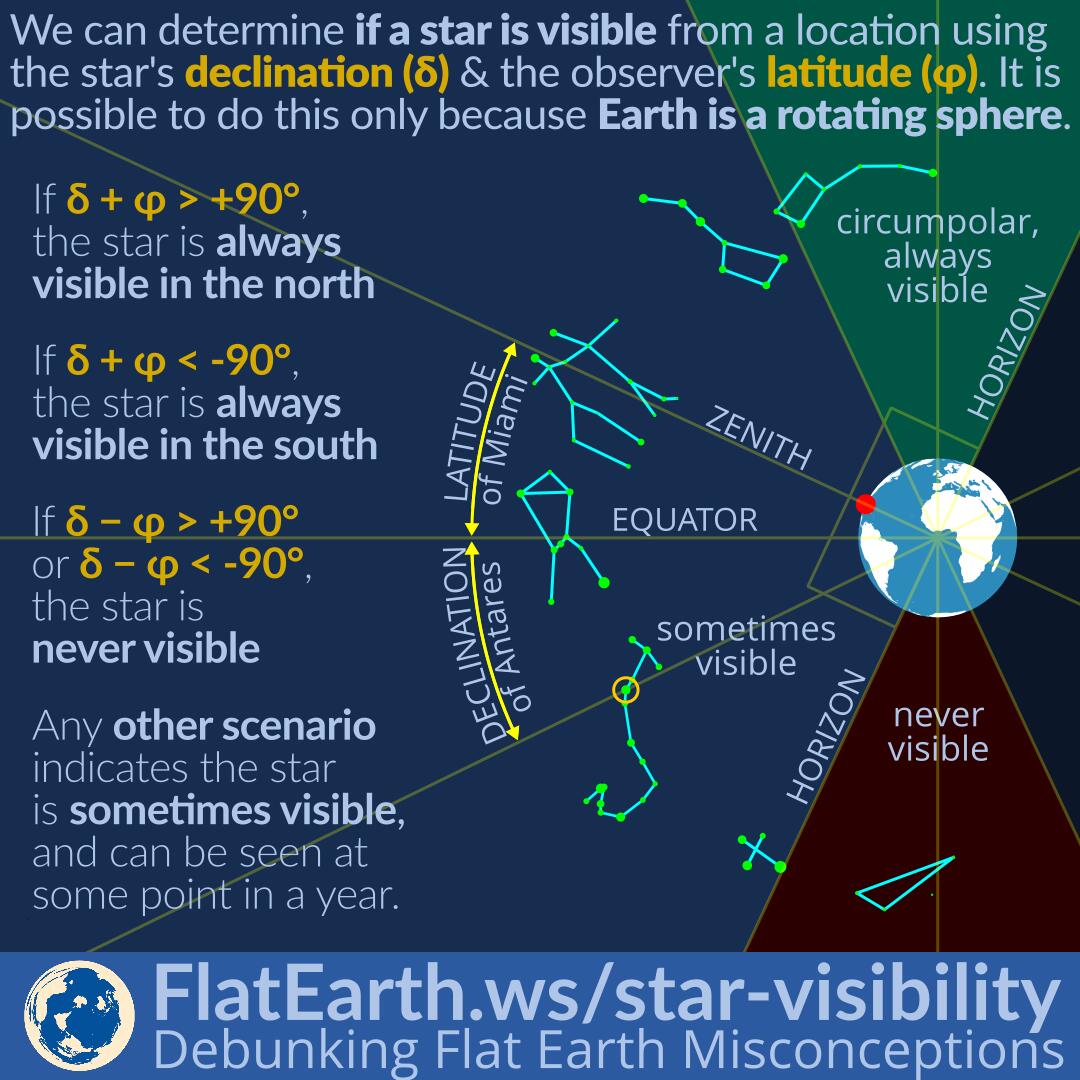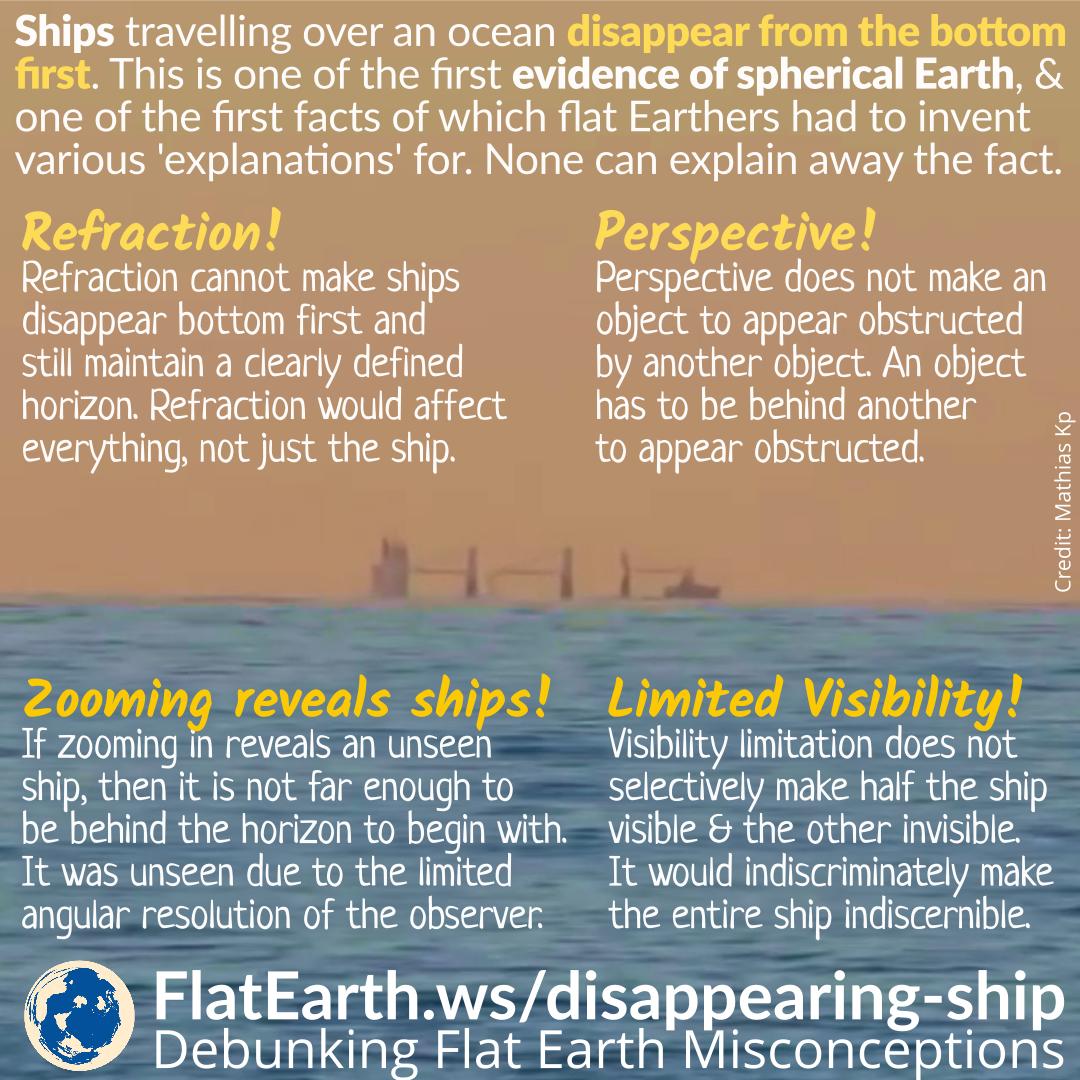Different reasons can cause a distant object to be not visible:
- The angular resolution limit of the observer.
- The visibility limit imposed by the atmosphere.
- Obstruction by another object, including by Earth’s curvature.
Flat-Earthers incorrectly presumed “a distant ship is not visible only because of Earth’s curvature.” Incorrectly concluded if we can bring the ship back into view, the curve must not exist. In reality, Earth’s curvature is not the only thing that can cause a distant ship to be not visible; other reasons can also cause it.
Continue reading “Different Reasons Why a Distant Object is Not Visible”









